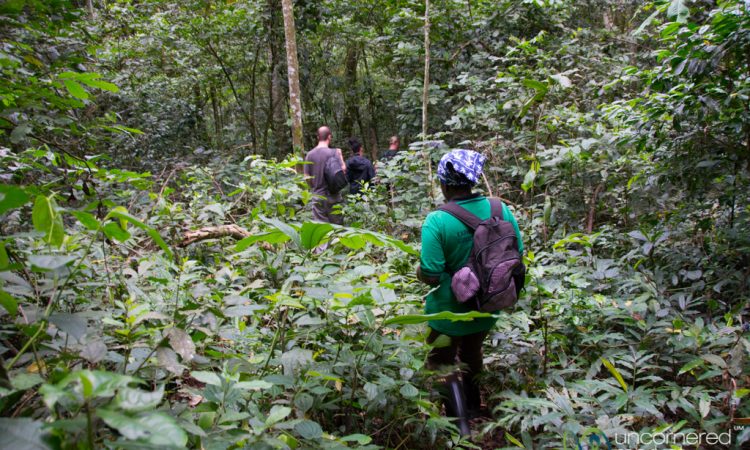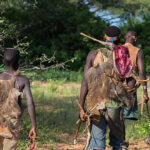 Witu Forest Reserve is one of the Protected Areas within Kenya, found within the Lamu District, and extends for an area of 46.39 square kilometers (4639 hectares/11,463 acres). Witu Forest Reserve was formed in 1927 by amalgamating Utwani Forest Reserve with the nearby Gongoni Forest Reserve while leaving their original names in use and was set up to protect wildlife and some of the endangered species of flora such as Euphorbia tanaensis. Witu Town is just 5 kilometers to the west of this Forest and is said to have about 6000 inhabitants.
Witu Forest Reserve is one of the Protected Areas within Kenya, found within the Lamu District, and extends for an area of 46.39 square kilometers (4639 hectares/11,463 acres). Witu Forest Reserve was formed in 1927 by amalgamating Utwani Forest Reserve with the nearby Gongoni Forest Reserve while leaving their original names in use and was set up to protect wildlife and some of the endangered species of flora such as Euphorbia tanaensis. Witu Town is just 5 kilometers to the west of this Forest and is said to have about 6000 inhabitants.
The Kenyan Government confirmed gazetting the Forest in 1962 with more land measuring 7 square kilometers (700 hectares) gazetted in 2002 to cover its current size of 46.39 square kilometers (4639 hectares/11,463 acres while other 9 square kilometers (900 hectares/2224 acres) were left ungazetted but enclosed. The nearby Mungajini Forest within Nairobi Ranch covers an area of 11 square kilometers (1100 hectares/2718 acres). However, by 2007, there was still no documented Management Plan for Witu Forest much as it was managed under the Forest Act of 2005 by the Kenya Forest Service, which replaced the former Forest Department in 2005.
To the north-eastern side of the Forest is Pangani Swamp while to its east and south-east is the Nairobi Ranch that also includes the remote Mungajini Forest. It is bordered by the Witu Settlement Areas in its south and southwest but these areas were allegedly established in 1995 for agricultural development of the local people but the Government of Kenya was forced to relocate people from the Central Province.
Witu Forest Reserve is known for rare flora species including Euphorbia tanaensis, one of the critically endangered plants in the Forest Reserve with only 20 mature ones (according to IUCN Red List of Threatened Species). This Forest Reserve is also an important elephant migrating Route between Kipini Conservancy, Dodori National Reserve, and Amu ranch.
Much as it is one of the recognized Forests in the country, it has faced several challenges including illegal logging that was reported in 2004 but also local hunting for bushmeat as well as illegal logging with the recent one being in 2011. Additionally, even when it is considered a Forest Reserve and is undoubtedly legally protected, Witu Forest Reserve as well as the endangered tree species are not accorded enough protection. All hope is not lost because Organizations like David Sheldrick Wildlife Trust have come into partnership with the Kenya Forest Service to protect the forest from illegal encroachment and overexploitation of its resources but most importantly maintain its rich biodiversity
Wildlife and Birds within Witu Forest Reserve
Tourists can visit the Witu Forest Reserve all year round and be treated to the breathtaking views of numerous wildlife species including primates like the black and white colobus monkeys and yellow baboons, large herds of elephants passing through the Reserve in addition to the lesser kudus, antelopes, giraffes, gazelles, buffaloes, and Gerenuks among others.
This site is also home to many bird species especially the migratory species from North Africa and Europe in addition to the native forest species of birds. The Forest also offers several flora species, some of which are critically endangered while others are used as local herbs by the locals. Visitors interested in exploring this site should expect to enjoy forest walks, bird watching, and butterfly watching.
Places to Stay
There are numerous places where tourists can spend overnight/s depending on the budget but the common ones are Kumbali Country Lodge, Jalsa Beach Hotel, Kekoorok Lodge, Forest Creek Lodge, Fairmont Zimbali Lodge, and the Rondo Retreat among others.
Access to the Forest Reserve
Witu Forest Reserve can be reached by road from Nairobi City to Lamu where the journey lasts only 5 hours. You can choose to hire a car with a driver in Nairobi or drive your own adventure by renting a car without a driver.



